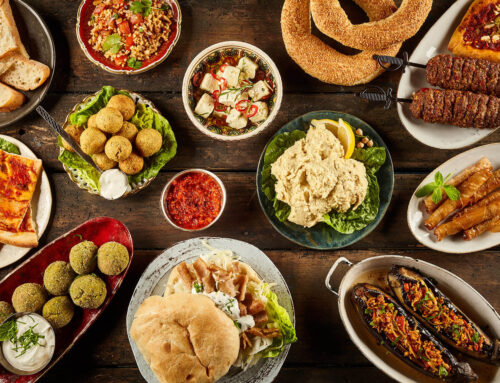The Historical Influence of the Ottoman Empire in Greek Cuisine
Greek cuisine has been significantly shaped by the historical influence of the Ottoman Empire, which ruled over Greece for approximately 400 years until the early 19th century. The culinary exchange between these two cultures has left a lasting impact on Greek gastronomy, resulting in a fusion of flavors, ingredients, and techniques. In this comprehensive guide, we explore the Ottoman influence on Greek cuisine, providing culinary arts students, chefs, researchers, and the general public with an in-depth understanding of the diverse elements that have contributed to the development of Greek culinary traditions.
Culinary Techniques and Influences
The Ottoman Empire introduced numerous culinary techniques to Greek cuisine that continue to be used today. Stuffed vegetables and dolmades, dishes featuring grape leaves or vegetables filled with rice, herbs, and sometimes meat, are examples of Ottoman-inspired creations that have become staples in Greek cooking. Similarly, the tradition of slow-cooking meats and vegetables in clay pots, known as “tava” or “giouvetsi,” has its roots in Ottoman culinary practices.
Ingredients and Flavors
The Ottoman Empire’s culinary influence on Greece is evident in the variety of ingredients and flavors that have been integrated into Greek cuisine. The extensive use of spices, such as allspice, cinnamon, and cumin, has enriched Greek dishes with layers of complexity and depth. Additionally, ingredients like tahini, a sesame seed paste, and the egg-lemon sauce known as “avgolemono” have Ottoman origins and continue to feature prominently in Greek recipes.
Sweets and Desserts
The Ottoman influence on Greek cuisine is particularly apparent in the realm of sweets and desserts. Baklava, a rich, flaky pastry filled with nuts and sweetened with syrup or honey, has its origins in the Ottoman Empire and has become a beloved Greek dessert. Similarly, the sweet semolina-based cake called “ravani” and the custard-filled pastry “galaktoboureko” are examples of Ottoman-inspired confections that have become integral to Greek culinary traditions.
Culinary Exchange and Adaptation
During the Ottoman era, the culinary exchange between Greeks and Ottomans was not a one-way street. Greek cooks adapted and refined many Ottoman dishes, giving them a unique Greek twist. The moussaka, a dish made of layered eggplant, ground meat, and béchamel sauce, is an example of a dish with Ottoman roots that has been distinctly Hellenized. This culinary adaptation and fusion resulted in a rich and diverse gastronomic landscape that remains a hallmark of Greek cuisine.
The historical influence of the Ottoman Empire has left an indelible mark on Greek cuisine, shaping its development through the exchange of culinary techniques, ingredients, and flavors. As culinary arts students, chefs, researchers, and food enthusiasts delve into the world of Greek food, understanding the Ottoman impact is essential to appreciating the depth, complexity, and adaptability of Greek gastronomy. By recognizing the role of the Ottoman Empire in shaping Greek culinary traditions, we can better appreciate the rich tapestry of influences that have contributed to the vibrant and flavorful cuisine enjoyed today.


